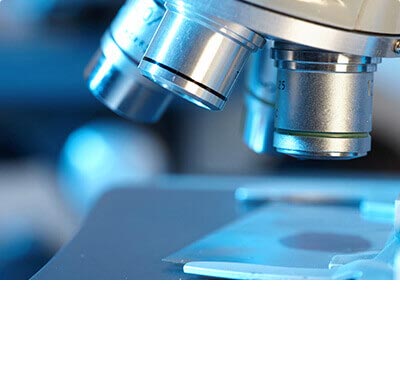- 1.1 Describe the key features that characterize living things, the levels of organization in nature, and the various disciplines in biology that enable their study.
- 1.2 Explain the importance of inductive and deductive reasoning in scientific inquiry.


Built from OpenStax’s Biology
Introduction to Non-Majors Biology
BNED Courseware for Non-Majors Biology covers the scope and sequence requirements of most introductory biology courses. This course covers the principles and concepts of biology introducing students to basic biological principles and scientific reasoning and connecting them to the various topics within this extremely broad discipline. The course emphasis is on organisms, biodiversity, plant and animal systems, ecology, genetics, and biotechnology. A host of video examples and explanations, auto-graded practice quizzes and ample in class and homework activities help students to understand concepts and be aware of the everyday applications of these concepts in their world.
Learning Objectives/
- 2.1 Describe the properties of particles that form all matter and their interactions.
- 2.2 Explain the composition and properties of water that make it the essence of life.
- 2.3 Compare the structures, functions, and chemical compositions of the four major groups of organic macromolecules.
- 3.1 Summarize the role of different microscopy techniques in the development of the cell theory.
- 3.2 Compare and contrast prokaryotic and eukaryotic cells and the relative sizes of their cellular components.
- 3.3 Describe the structures and functions of eukaryotic plant and animal cells.
- 3.4 Describe the fluid mosaic model of cell membrane structure and the roles of each component.
- 3.5 Differentiate among diffusion, facilitated transport, and osmosis.
- 3.6 Describe active transport.
- 4.1 Explain how cells use energy to support their metabolism.
- 4.2 Summarize the process of glycolysis and the overall output in terms of ATP production.
- 4.3 Compare the processes of glycolysis, citric acid cycle, and oxidative phosphorylation in terms of where they occur, their reactants, and net energy yield.
- 4.4 Describe fermentation in plant and animal cells and its importance in terms of energy harvest and ATP production.
- 4.5 Summarize how products of protein and lipid catabolism enter the metabolic pathway that breaks down glucose.
- 5.1 Summarize the main events that take place during photosynthesis.
- 5.2 Explain the role of chlorophylls and other pigments in the light-dependent reactions of photosynthesis.
- 5.3 Describe the Calvin cycle in plants and its link to cellular respiration.
- 6.1 Describe the structure and functions of genome components.
- 6.2 Describe the sequence of events that occur in each phase of the cell cycle and the roles of checkpoints in cell cycle regulation.
- 6.3 Describe how mutations in oncogenes and tumor suppressor genes contribute to cancer.
- 6.4 Compare and contrast the roles of cell division in unicellular versus multicellular organisms.
- 7.1 Distinguish among the three life-cycle patterns characteristic of eukaryotes.
- 7.2 Describe the events characteristic of each phase of meiosis I and II and differentiate between meiosis and mitosis.
- 7.3 Explain the consequences of nondisjunction and errors in chromosome structure on development.
- 8.1 Describe the findings in Mendel’s experiments that enabled him to hypothesize his laws of inheritance.
- 8.2 Describe Mendel’s laws of segregation and independent assortment and their relation to meiosis.
- 8.3 Explain how Mendelian inheritance changes with respect to continuous variation, incomplete dominance, modifications of genes, and epistasis.
- 9.1 Describe the structure of DNA and the base-pairing rule.
- 9.2 Describe the process of DNA replication and mechanisms of repair.
- 9.3 Describe the process of transcription.
- 9.4 Describe the process of translation and the role of enzymes, protein factors, and energy sources in translation.
- 9.5 Differentiate between gene regulation and expression in prokaryotes and eukaryotes.
- 10.1 Summarize recombinant DNA techniques and other methods biologists use to manipulate nucleic acids and clone copies of specific genes.
- 10.2 Describe the application of DNA technology in the fields of medicine, pharmacology, and transgenic organisms.
- 10.3 Describe approaches used for genome sequencing and mapping and their applications.
- 11.1 Compare the modern synthesis of evolutionary theory with Darwin’s original theory of evolution.
- 11.2 Describe the four factors that affect the Hardy-Weinberg equilibrium.
- 11.3 Describe the types of evidence for evolution.
- 11.4 Compare the mechanisms of allopatric and sympatric speciation with relevant examples.
- 11.5 Describe the various challenges and misconceptions associated with the theory of evolution.
- 12.1 Justify the need for classification of species and explain the connection between systematics and taxonomy to phylogeny.
- 12.2 Describe the types of evidence scientists use to make evolutionary connections between organisms.
- 13.1 Describe the characteristics of the two domains of prokaryotes and their roles as either disease-causing agents or for bioremediation purposes.
- 13.2 Explain how endosymbiotic events contributed to the origin of eukaryotic cells such as mitochondria and plastids.
- 13.3 Explain how protist diversity is reflected in their metabolism, structure, reproduction, and habitat.
- 13.4 Summarize the evolution and characteristics of fungi and the diversification of their traits.
- 14.1 Summarize the adaptations that led to plant survival on land.
- 14.2 Differentiate between seedless vascular plants and the three groups of bryophytes.
- 14.3 Describe the evolution of gymnosperms and distinguish among the four divisions of gymnosperms.
- 14.4 Relate the emergence of the flower, the fruit, and the process of double fertilization to the diversity of angiosperms.
- 15.1 Describe the features that distinguish animals from other groups of organisms.
- 15.2 Compare the physical, behavioral, and structural characteristics of the sponges and cnidarians.
- 15.3 Compare the physiological processes of flatworms, nematodes, and arthropods.
- 15.4 Describe the anatomical features of mollusks and animals in the phylum Annelida.
- 15.5 Describe the features that characterize echinoderms and chordates.
- 15.6 Describe the unique structures that distinguish different types of vertebrates.
- 16.1 Describe thermoregulation and osmoregulation in animals and how the systems that regulate these processes contribute to homeostasis.
- 16.2 Describe the organs and their specialized functions in aiding the digestive and absorptive processes.
- 16.3 Describe the anatomy and physiology of respiratory and circulatory systems in relation to ventilation and perfusion.
- 16.4 Summarize the functions of the different types of hormones secreted by the various glands in the endocrine system.
- 16.5 Describe the structure and functions of skeletal muscles.
- 16.6 Explain the structure and functions of the basic parts of the autonomic and peripheral nervous systems.
- 17.1 Summarize the structures and types of viruses, how they replicate, and the effects they have on their hosts.
- 17.2 Describe the barriers to pathogen entry into the body and the innate immune system responses.
- 17.3 Explain the characteristics and functions of adaptive immunity.
- 17.4 Summarize the maladaptive immune responses to allergens or pathogens.
- 18.1 Differentiate between the processes of asexual and sexual reproduction in animals.
- 18.2 Describe the processes of fertilization, embryonic development, and organogenesis.
- 18.3 Describe the specialized anatomies in the two sexes, their functions, and the role of hormones in reproduction.
- 19.1 Describe the methods and tools ecologists use to analyze demographic data.
- 19.2 Outline the models of population growth and the factors that influence them.
- 19.3 Explain the factors that influence population dynamics and the consequences of exponential human population growth.
- 19.4 Explain the effects of population interactions on ecological communities.
- 20.1 Describe how energy flows directionally through ecosystems.
- 20.2 Differentiate between the biogeochemical cycling of mineral nutrients through ecosystems and their environment.
- 20.3 Summarize the distribution, climates, and habitats of the eight major terrestrial biomes.
- 20.4 Outline the characteristics of marine environments and the abiotic factors that affect the plant and animal communities in these biomes.
- 21.1 Describe the types, patterns, and benefits of biodiversity.
- 21.2 Assess the factors responsible for the loss of biodiversity.
- 21.3 Outline the strategies to preserve biodiversity.
Be the first to review “Introduction to Non-Majors Biology”
You must be logged in to post a comment.



There are no reviews yet.